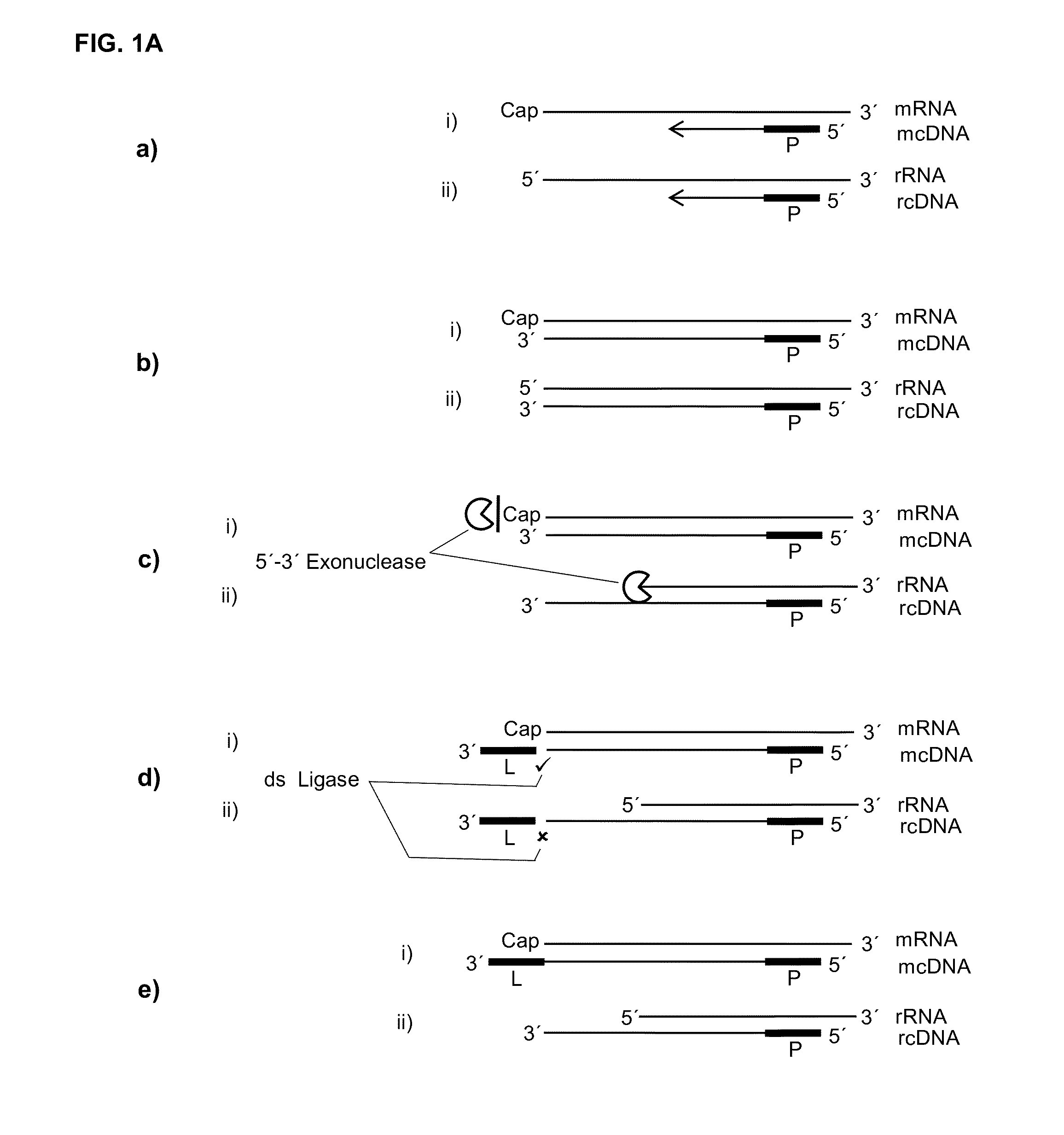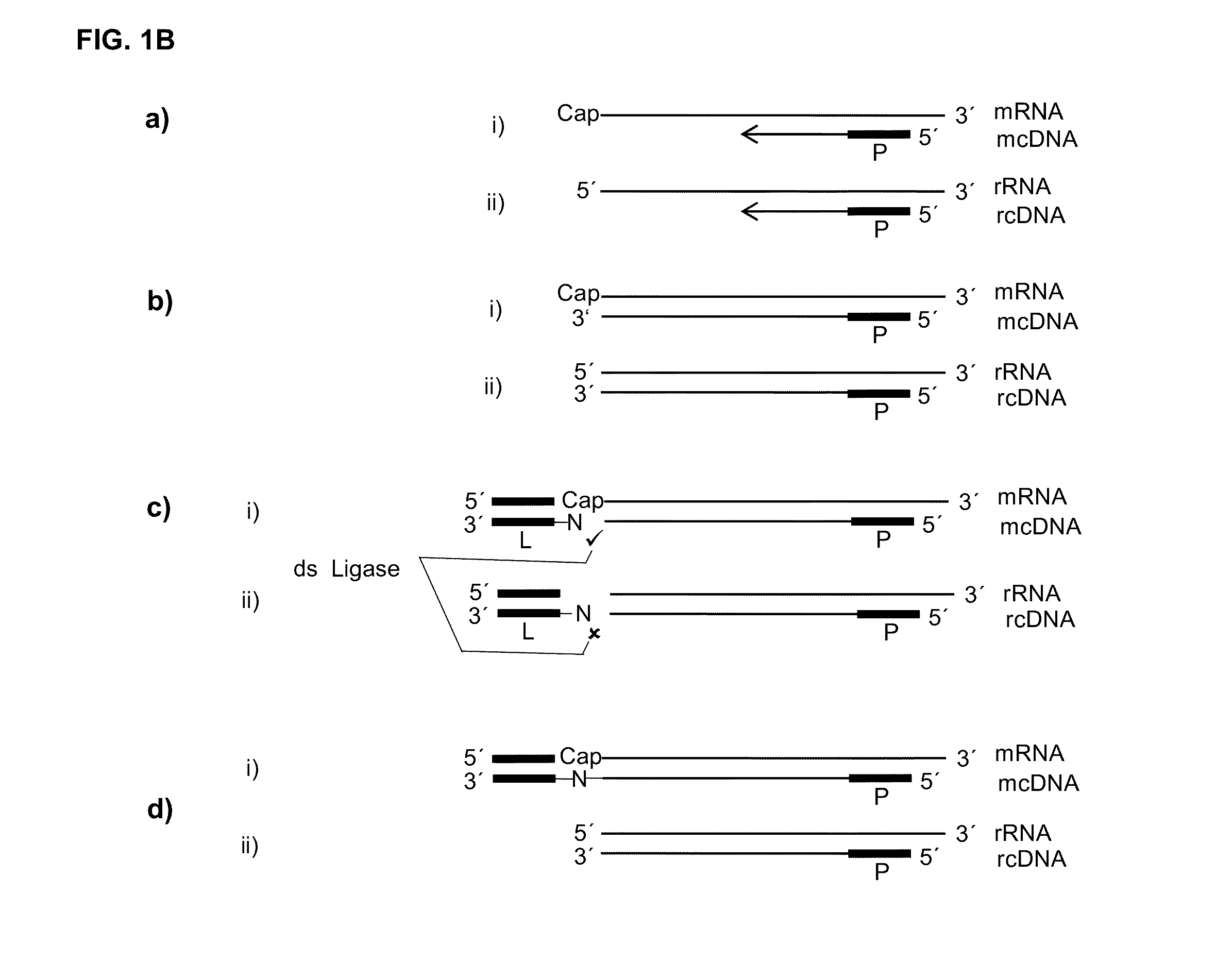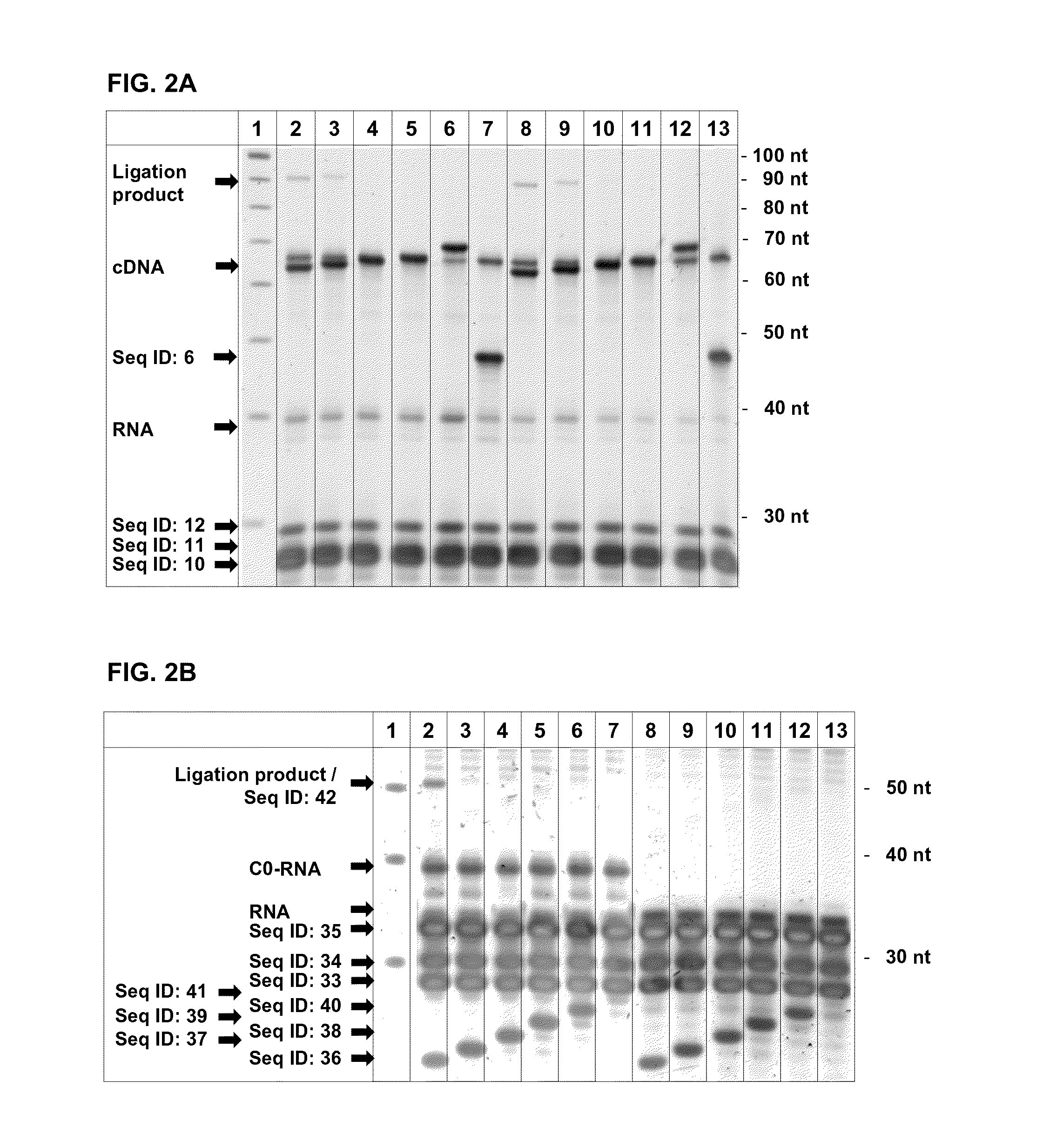5' protection dependent amplification
a technology of protection and amplification, applied in the field of analysis of complex mixtures of nucleic acids, can solve the problems of reducing the selectivity of methods, reducing the selectivity of rna, and reducing the durability of rna, so as to increase the selectivity and sensitivity, and increase the risk of degradation
- Summary
- Abstract
- Description
- Claims
- Application Information
AI Technical Summary
Benefits of technology
Problems solved by technology
Method used
Image
Examples
example 1a
Investigating Double Strand Specific Ligation Using Artificial RNA Molecules of Defined Sequence
[0106]As the cap presents a structure that is in its essence a guanosine that is methylated on the N7 of the purine ring and linked on its 5′ end to the 5′ end of the RNA through a triphosphate bridge, it was previously not known if a label could be ligated in a double strand specific manner to a cDNA in a hybrid with such a capped RNA. Therefore, in an artificial assay capped T7 transcripts together with oligonucleotides with different 3′ overhangs or 3′ missing nucleotides were set up in a ligation reaction to investigate if such double strand specificity could be reached. Of special interest was if an extra nucleotide on the cDNA would be needed that could base pair or stack with the cap.
[0107]Different oligonucleotides representing the cDNA with different 3′ extensions (Seq ID: 22-26) were ordered from Microsynth AG (Balgach, CH), are reverse complements to the RNAs (Seq ID: ...
example 1b
Investigating Double Strand Specific Ligation of an Adapter with a 5′ Overhang to a Capped or Non-Capped RNA::cDNA Hybrid
[0110]If, as raised above, during reverse transcription of capped RNA (mRNA) a reverse transcriptase preferably adds no additional nucleotide (C) to the cDNA then the cap will provide for a one nucleotide overhang. However, this cap overhang will consist of an inverted nucleotide that is furthermore connected through a triphosphate bridge to 5′ end of the RNA. Therefore it was investigated if this cap overhang can interact (e.g.: base stack or base pair) with a 5′ overhang of an adapter in a manner that enables double strand specific ligation of a linker oligo to the 3′ end of the cDNA.
[0111]In contrast to the capped RNA, if the reverse transcriptase reaches the 5′ end of non-capped RNA it will leave ether a blunt end or add additional nucleotides to the cDNA in a non template fashion. Therefore, control reactions where included where the non-capped RNA was in hyb...
example 2
T7 Exonuclease Digestion of Artificial RNAs Having Different 5′ Ends
[0116]To show the specificity of the exonuclease digestion for different 5′ ends of RNAs when in hybrid to different cDNA molecules, an experiment was carried out using artificial oligonucleotides.
Hybridization:
[0117]The template for the T7 Exonuclease digestion was done on PAGE-purified hybrids of the RNA (Seq ID: 4, 7, 8) to different oligos resembling the cDNA (Seq ID: 22, 23). The different RNAs (Seq ID: 7, 8) were ordered from Eurogentec (Seraing, Belgium). Hybridization was done by heating the RNA and oligos in 10 mM Tris pH 7.0 up to 95° C. for 30 sec with cooling down to 45° C. with a ramp speed of 2% (an ABI9700 thermal cycler) and addition of equal volume 2× Hybridization buffer (100 mM Tris pH 7.9, 6 mM MgCl). After a hold of 15 min the temperature was further decreased with a ramp speed of 2% down to 4° C. Following hybrids were synthesized: Seq ID: 4 / Seq ID: 22, Seq ID: 4 / Seq ID: 23, Seq ID 7 / Seq ID: 22...
PUM
| Property | Measurement | Unit |
|---|---|---|
| pH | aaaaa | aaaaa |
| pH | aaaaa | aaaaa |
| pH | aaaaa | aaaaa |
Abstract
Description
Claims
Application Information
 Login to View More
Login to View More - R&D
- Intellectual Property
- Life Sciences
- Materials
- Tech Scout
- Unparalleled Data Quality
- Higher Quality Content
- 60% Fewer Hallucinations
Browse by: Latest US Patents, China's latest patents, Technical Efficacy Thesaurus, Application Domain, Technology Topic, Popular Technical Reports.
© 2025 PatSnap. All rights reserved.Legal|Privacy policy|Modern Slavery Act Transparency Statement|Sitemap|About US| Contact US: help@patsnap.com



